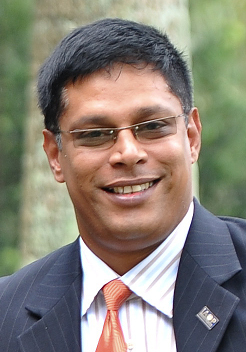IR 4.0 and Implications for Socio-Economic Transformation
By Bobby Varanasi
There is neither a race for adoption, nor a need to frame it as one. Adoption of technologies and methodologies, best practices and frameworks have, and continue to be an evolving process for decades (not a slave to modern technologies alone). Corporations will need to evaluate the implications for change, enhancements and experimentation in the context of their balance sheets, customer needs and ecosystem readiness (i.e. their suppliers, vendors, partners, distributors, retailers, supply chain participants et al). Each nation state will do what it takes to modernize their industries first, incrementally. There may be endeavors aimed at enhancing value alongside.
“Many nations have embarked on establishing national frameworks around IR4.0. The question continues to remain unanswered – are they relevant? Does a nation need a framework in the first place, or can industry be trusted to chart its own course? Should frameworks be prescriptive? Or indicative of policy stances that support change and adoption alone?”
However I am inclined to think that value enhancement is more convoluted than envisaged, for global supply chains to transcend existing hub-n-spoke models into interdependent fully-owned entities is significantly complex. Meanwhile, pockets of adoption aimed at increased efficiencies will be all that we shall see, with adoption rates continuing to be low. The contest here is not between technology and modernity.
Instead, it is between adoption and margin protection (two distinctly separate issues).
We would like to examine some core “returns” being promoted as consequences of IR4.0.
1. Adoption and readiness is in place: Are nations ready? We believe that most nations are laggards in terms of adoption. Much of it is owed to the lack of understanding on the value to be gained from such adoption, as also the fact that most manufacturing players in the developing world are not in control of their value chains (given they are just mere dots within a larger value chain owned by someone else). Such firms are neither end-producers for most goods, not do they own the entire product lifecycle (from R&D through to retailing). Hence their hands are tied in terms of adoption to create value. The only opportunity therefore with 4IR is to enable efficiencies within production environments. Value to be derived from such efficiencies is significantly marginal, and perhaps not worth it in the larger sense when taking into account the value chain itself. Readiness consequently isn’t there at all.
2. Large firms are leading the pack: The question then arises about large (and mostly publicly listed) firms in such countries, particularly relating to their ability and/ or willingness to lead the way in adoption. Many may be seen as the torch-bearers for lighting up the way for others to follow. While this may have been true for decades, we believe that in today’s world, size of companies does not really matter. Industry segments, and the “state of ownership of value chains” are more crucial to appreciate. Some large firms that own their value chains are more eligible for an end-to-end adoption and transformation, provided they see the gains manifested not just in efficiencies (bottom-lines) but in their top-lines (revenues). Lack of understanding of the latter is reducing the impetus for adoption. For firms that do not own value chains, their adoption is almost negligible for the same reasons – particularly as it relates to ambiguity around return on investments.
Since they only control some elements of the value chain, the gains may not be significant enough to justify adoption.
3. National frameworks are necessary guides to adoption: Many nations have embarked on establishing national frameworks around IR4.0. The question continues to remain unanswered – are they relevant? Does a nation need a framework in the first place, or can industry be trusted to chart its own course?
Should frameworks be prescriptive? Or indicative of policy stances that support change and adoption alone? Many such questions continue to plague us. Taking the case of Malaysia in point, the nation has proposed this as a “forward-looking” framework and not as an ultimatum. One needs to appreciate the difference here in the first place. While it does maintain that a progressive pursuit would permit enhancement for most industries, its narrow emphasis on certain sectors and limited to technologies alone leaves much to be desired. I am inclined to believe that governments should stay away from prescribing solutions to industries. Instead, lay down policies for clean governance, progress and recourse to law, and then get out of the way. Industries will pursue value within their own contexts, unburdened by a mandate. Yes, this may create chaos – with mediocre firms losing out. Interestingly however, it translates to benefits for industries as competence would play out vividly, with consumers and the economy being the eventual beneficiaries. The “tyranny of frameworks” has to stop.
4. IR4.0 helps increase globalization, and eliminate digital divide: The link between one innovative approach toward modernization and intrinsic woes that plague socio-economic fabric of nations is at best tenuous, and at worst irresponsible and dangerous. Again, in fast-developing nations (like many South East Asian ones), digital divide doesn’t exist in a manner defined globally, which is true in most cases. However, one misses the point when one claims that access to technologies / devices/ internet is more than sufficient to create economic progress. Opportunities are not slaves to technologies. Instead, they are a function of value creation, distribution of competencies, and inclusion.
Globalization has for long aimed at standardizing distribution and exchange (economic terms) alongside production and consumption, to which Malaysia is a core participant. Nevertheless, equitable distribution and exchange may not necessarily be a consequence of limited production capacities (and participants).
Much of the nation’s hinterland continues to languish in the past, with population groups left out of the overall production spectrum. It is easy to state that the nation has full employment. I believe this number hides a range of issues, most significantly (a) partial/ under-employment, (b) low production competencies,
(c) nil design/ development endeavors, and (d) low wealth creation. Dumb jobs create dumb employees. Over time, such jobs when replaced by machines, will only result in exclusion, notwithstanding nonexistence of a digital divide.
5. IR4.0 feeds nationalism and expansion of democratic endeavors: We believe that nationalism and democracy, alongside open-markets and cross-border travel/ trade are all functions of policies aimed at being part of a global ecosystem. 4IR is just one new entrant into the group of influencers that have helped build nation states, no more and no less. Will 4IR feed nationalism? No. Its aim is apolitical. Instead, it is about collective and inclusive development of the nation’s economy, which then translates to collective and inclusive development of citizens, period.
6. IR4.0 promotes inclusivity and distribution of wealth: Equality, inclusivity and wealth distribution are macro and micro economic aspects that are consequences to the confluence of policy, competitiveness, competencies and balancing production-consumption subsystems alongside distribution and exchange.
These issues cannot be touted as resolved with adoption of any single technology or management fad. It is not only shortsighted, but dangerous to do so. Creation of wealth has to first happen. Many nations suffer from the fact that wealth – personal income and assets – and individual gains are not equitably created in the first place, thereby leading to unequal distribution (though it is managed by way of transferring income and wealth from some individuals to others by means of a social mechanism such as taxation, charity, welfare, public services, land reform, monetary policies, confiscation, divorce or tort law). In the absence of widespread wealth creation, distribution naturally languishes and remains limited to a few.
The consequential inequality spreads in terms of its implications for consumption patterns, consumer demand dynamics and related aspects. One cannot dilute the confluence of a myriad number of factors down to a single solution. Elimination of monopolies, policies promoting growth alongside inclusion, open collaboration and emphasis on reducing wage inequality, supported by enabling factors like incentives, tax regimes etc., need to all go hand-in-glove. Private sector performances need to ensure commitment to excellence, instead of being protected by tariffs or other limitations that only breeds mediocrity
(which in the long run has a devastating impact on socio-economic wellbeing of the entire nation). Significant export orientation, or overt dependence on depleting natural resources are a sure cause for economic stagnation. Nation states that focus on building domestic resilience stand steadfast, where industrial sectors lead through R&D, innovation, and co-creation.
There are lessons for many nations to clearly step out of the middle-income trap they find themselves in – (a) enable competition by getting government out of business, (b) industries always chase their leaders, building competencies and innovation along the way. Hence government should stay away from prescribing to industries “how to manage”, (c) focus on wealth distribution by enacting citizen and business-friendly policies that empower transparency and excellence, instead of concentrating on a few pockets alone, (d) aim for owning competencies across value chains in industries. This would permit domestic resilience and the wherewithal to withstand global economic swings, (e) focus on domestic issues first instead of trying to replicate models from other nations. A well-knitted nation of inclusive producers across sectors is far more impactful than excellence in only one industry (or sub-sector).
7. IR4.0 eliminates urban slums: Urban slums are an interesting case to ponder that one needs to first define appropriately. Most often the talk is about poor people clogging the cities. However, the most crucial point is that across most of the developing world, woes with lack of economic opportunity (concentrated only on a few cities, that themselves carry the brunt of significant histories behind them) continue to attract people from the hinterlands. These people may be poor, but surely they are not incompetent? With widespread primary education, people are in general getting more informed and aware, thereby looking for greener pastures not found locally. The Genie coefficient may seem to be breaking down. However, it also hides a nasty side. City-bred people tend to view people from the hinterlands as too dumb for their liking; while villages consider their progeny too smart to be trapped within their local confines. The consequence is urban slums.
The only feasible solutions to build collective wellbeing are (a) for governments to devise policies and means that would permit jobs to go to the hinterlands, with a view to an integrated view; and (b) for corporations to fundamentally alter their views to employment and skill needs. Both these entities have to work together in raising the bar with competencies, so as to reduce / eliminate marginalization. In the absence of these two solutions, we can wax eloquent about converting dumb cities into smart ones, but that would only benefit certain sections of the society. Worse, these operationally smart (yet strategically stupid) approaches would surely result in increased polarity, greater inequality and the consequential woes surrounding unemployment, underemployment, stagnation (opportunities and wages), and breakdowns with social order in general. This is not an issue for people at the lowest rungs of the income ladder alone. It is a national imperative for nations.
“These issues [Equality, inclusivity and wealth distribution ] cannot be touted as resolved with adoption of any single technology or management fad. It is not only shortsighted, but dangerous to do so. Creation of wealth has to first happen. Many nations suffer from the fact that wealth – personal income and assets – and individual gains are not equitably created in the first place, thereby leading to unequal distribution.”
The argument that today’s complex world no longer provides for a work-life balance owing to overworked individuals is quite misplaced. Progress only emanates from the positive consequences of excellent outcomes, and not from the unfettered rigor of provisioning inputs. Most nations continue to contend with existential woes, where nascent industrial sectors, informal economies and highly fragmented supply chains continue to wreak havoc with establishing standards, or streamlining to create value. Consequently, most such nations are yet to be recognized for inventing any solution, or for being a leader in any industry or sub-sector. Mediocrity wrapped in excellence can only sell so much. One needs to build value, then sustain it effectively and with agility, so as to help translate into benefits (both personal and economic).
8. IR4.0 eliminates brain drain in developing nations: It is quite easy to blame it on brain drain and ignore the underlying realities. Brain drain is not an issue, period. Taking Malaysia as a case in point, latest statistics reveal that less than a million Malaysians live overseas, with bulk of them in Singapore (686,000) and Brunei (70,000). Being candid here, the issue is rather more systemic. It is about brains, and developing thinking minds. A systemic regression in education delivery systems, supported by content dilution, supported by conclusions that access to information is knowledge, significantly manifested sense of entitlement, and denial of complexity with modern learning, are all contributing to the single biggest issue – lack of thinking minds. The consequence of this issue is clear and present. Innovation does not exist. Creativity is nothing more than fancy replicas of proven solutions (from elsewhere). Curiosity has been replaced by discipline (where cultural inhibitions play a significant and highly detrimental part). Language and communication skills are pathetic.
“It is crucial to appreciate that one cannot flog a dead horse by addressing woes with tertiary learning systems alone. The entire system of formal education has to be overhauled. Alongside, one must appreciate that knowledge (with a shelf-life of less than two years now) cannot be leveraged ad infinitum. Instead, lifelong learning models have to complement formal education systems.”
It is crucial to appreciate that one cannot flog a dead horse by addressing woes with tertiary learning systems alone. The entire system of formal education has to be overhauled. Alongside, one must appreciate that knowledge (with a shelf-life of less than two years now) cannot be leveraged ad infinitum. Instead, lifelong learning models have to complement formal education systems. Silos that govern course curricula must be discarded. Outcome-centric learning has to become the norm. Only then can thinking minds be created who can then go on to transform the nation’s socio-economic fabric.
Way Forward
One seemingly coherent argument in favor of IR4.0 technologies emanates from presenting discrete success stories from nations such as Brazil, Ireland, Hong Kong, Vietnam and Thailand. These nations may have shown significant improvements in agriculture with the use of technologies like facial recognition systems to distinguish cows and swine; or using blockchain to tokenize seeds and improve farmers’ monetary gains; therefore this must apply to all sectors. We believe that one does the cumulative endeavors – undertaken by these nations spanning decades leading to this point – a disservice by presenting IR 4.0 as the holy-grail.
A fundamental rule with economics is this: envision outcomes, and then provision inputs. This rule applies to all sectors, agriculture included. At the top (for Malaysia), the going concern is that it is not self-sufficient with food, and therefore has to import bulk of all commodities, despite having significantly fertile lands at its disposal. A concerted approach will need the following to happen (a) determine the end-goals, for e.g. to be a net exporter of food products (which in turn creates self-sufficiency) – and this has to be a long-term goal and not just limited to a marketing gimmick aimed at showing off a few uses of modern technologies1, (b) redirect import costs and 1 For e.g. Malaysia had demonstrated the usage of drones during the 2014 floods, and made a significant statement about how a lot of good work was done. Subsequently, nothing happened. The Met department continues to be woefully unable to undertake effective climate modeling, nor predict extreme weather events. Meanwhile, one of the best lessons to be learnt can be found in Nepal, which export income toward other initiatives – healthcare, education, R&D, innovation, value chain ownerships etc., (c) empower farmers with modern farming methods, and not just depend on a few tech geeks to drop in some sensors, temporarily analyze and show incremental yield increases, and (d) create institutional reform that permits collaboration amongst government entities, industry providers and farming communities to sustain yields, crop varieties and overall quality controls.
One cannot just assume that throwing a few modern technologies like sensors, or facial recognition systems will automatically translate into value. Let’s not miss the forest for the trees. The case with Brazil2 offers significant lessons on how a nation – devoid of much fertile land – went on to become the world’s biggest breadbasket. In Malaysia, despite fertile land, farming is not considered a respectable job. The world needs food. For e.g., Malaysia’s food import bill is RM 34.8 B in 2018 (with a CAGR of 6.5% YOY since 2010, accounting for approx. 2.44% of the GDP now end 2019), thereby giving one a sense that the cost of imports are not significant enough to warrant action. On the contrary, I believe that enabling the farming sector would lead to significant amount of self-sufficiency alongside new export revenues that could then be deployed more effectively, while spurring innovation across other related industries (food products et al). These are long-term endeavors. Let’s not dilute them into conversations about modern technologies alone.
- 1 For e.g. Malaysia had demonstrated the usage of drones during the 2014 floods, and made a significant statement about how a lot of good work was done. Subsequently, nothing happened. The Met department continues to be woefully unable to undertake effective climate modeling, nor predict extreme weather events. Meanwhile, one of the best lessons to be learnt can be found in Nepal, which export income toward other initiatives – healthcare, education, R&D, innovation, value chain ownerships etc., (c) empower farmers with modern farming methods, and not just depend on a few tech geeks to drop in some sensors, temporarily analyze and show incremental yield increases, and (d) create institutional reform that permits collaboration amongst government entities, industry providers and farming communities to sustain yields, crop varieties and overall quality controls.
- One cannot just assume that throwing a few modern technologies like sensors, or facial recognition systems will automatically translate into value. Let’s not miss the forest for the trees. The case with Brazil2 offers significant lessons on how a nation – devoid of much fertile land – went on to become the world’s biggest breadbasket. In Malaysia, despite fertile land, farming is not considered a respectable job. The world needs food. For e.g., Malaysia’s food import bill is RM 34.8 B in 2018 (with a CAGR of 6.5% YOY since 2010, accounting for approx.2.44% of the GDP now end 2019), thereby giving one a sense that the cost of imports are not significant enough to warrant action. On the contrary, I believe that enabling the farming sector would lead to significant amount of self-sufficiency alongside new export revenues that could then be deployed more effectively, while spurring innovation across other related industries (food products et al). These are long-term endeavors. Let’s not dilute them into conversations about modern technologies alone. (with the help of young entrepreneurs and students) who worked during the devastating earthquake in 2015, using drones and other solutions to map low-lying areas, dangerous crevices, locations of people living in far-flung areas etc and built a comprehensive system being used by the nation today. Great lessons to be learned from Uttam Pudasaini and Nepal Flying Labs (www.flyinglabs.org).
- 2 The success of Brazilian farming is often attributed to its vast supply of natural resources, its continental dimensions and its predominantly tropical climate. Until the mid-20th century, however, food production in Brazil faced numerous challenges. A considerable portion of the country’s soil had low fertility, and the extensiveness of its territory presented an obstacle to transporting and distributing goods. Decades-long investment in technology and research in an integrated effort of public institutions, private players, and third sector agents allowed Brazil to transform low fertility areas into leading agricultural regions. A good example is the Brazilian Agricultural Research Corporation (Embrapa), created in 1972, which has helped Brazil to overcome such challenges over the past decades, becoming one of the world’s leading food producers. The Brazilian agriculture and livestock sector now corresponds to 23.5% of the country’s GDP, 25% of its jobs, and 46% of its exports. And it shows no signs of slowing down: in 2017, the sector grew by 13%, the highest rate since 1989.


Author
Bobby Varanasi sends in this article from New York to IT Edge News. Heis one of the acknowledged Top 25 Globalization Leaders in the global sourcing space and the Founder of Matryzel Consulting – an independent advisory firm that has been acknowledged as the Best of the World’s Best Outsourcing Advisory Firms in 2019, and as among the Top 20 World’s Best Outsourcing Advisory Firms (three years in a row – 2013, 2014 & 2015). He brings with him over two decades of experience in consulting and management across organizational strategy, technology, business services and globalization across sectors like Banking, Financial Services, Broking, Investment Management etc. He advises federal governments across the world on ICT sector development with particular emphasis on policy transformation, and industry-government partnerships aimed at creating domestic resilience through increasing productive (and inclusive) faculties of technology entrepreneurs. Some of the nations he has advised are the USA, Colombia, Brazil, Jamaica, Jordan, UAE, Kenya, Ghana, South Africa, Mauritius, Malaysia and Australia. Bobby also advises Fortune 500 customer organizations and emerging market entrepreneurs on strategy, growth, sourcing, expansions, mergers & acquisitions. He holds fiduciary responsibilities as a Board Member for IAOP (a New York hq’d Standards setting organization for the sourcing industry), and the Global Sourcing Council (a New York hq’d entity focused on the UN SDGs and sustainable sourcing). He is an Exco Member of Malaysia-Australia Business Council (a KL-hq’d entity focused on cross-border collaboration and enabling trade). Further, he is Co-Founder of a new-age blockchain based technology company called ThynkBlynk (a US hq’d IT firm). He is an Executive Director for Sigmax-e (a Malaysia hq’d firm focused on analytics and pattern recognition systems), and an External Advisor for Angstrohm Technologies (a Malaysia hq’d firm focused on healthcare technologies). He is also a Mentor for various tech startups appointed by the Federal Gov. of Malaysia.
Bobby is closely involved in developing and enhancing two global business standards for adoption and deployment by corporations worldwide: (a) Outsourcing Professional Standards (OPS) owned and evangelized by the International Association of Outsourcing Professionals (www.IAOP.org); and (b) Impact Sourcing Standards owned and evangelized by the Global Impact Sourcing Coalition (www.GISC.bsr.org). He is an avid author of various knowledge papers in both print and electronic media across global publications.
Further, he has authored a book titled “Humanomics – Making Sense of Socio-economic Impacts of Global Sourcing”, published by Penguin Random House. Bobby is also frequently quoted in global media – Economist, fDI, Outsourcing Gazette, CIO Asia, CIO Africa, ZD Net, ICT Media BV, Silicon India, The Outsource, Professional Outsourcing, Pulse, MABC Byline, APAC CIO et al. He is a recipient of many awards: Top 25 Globalization Powerhouse Leaders (by Globalization Today, US); Excellence in Leadership & Outsourcing (2016, 2015 and 2014, by Asia Outsourcing Congress, India); Golden Globe Tiger Awards for Leadership & Outsourcing (2015, by World CSR Day, APAC); Member of the Year (2012, by IAOP, USA).































